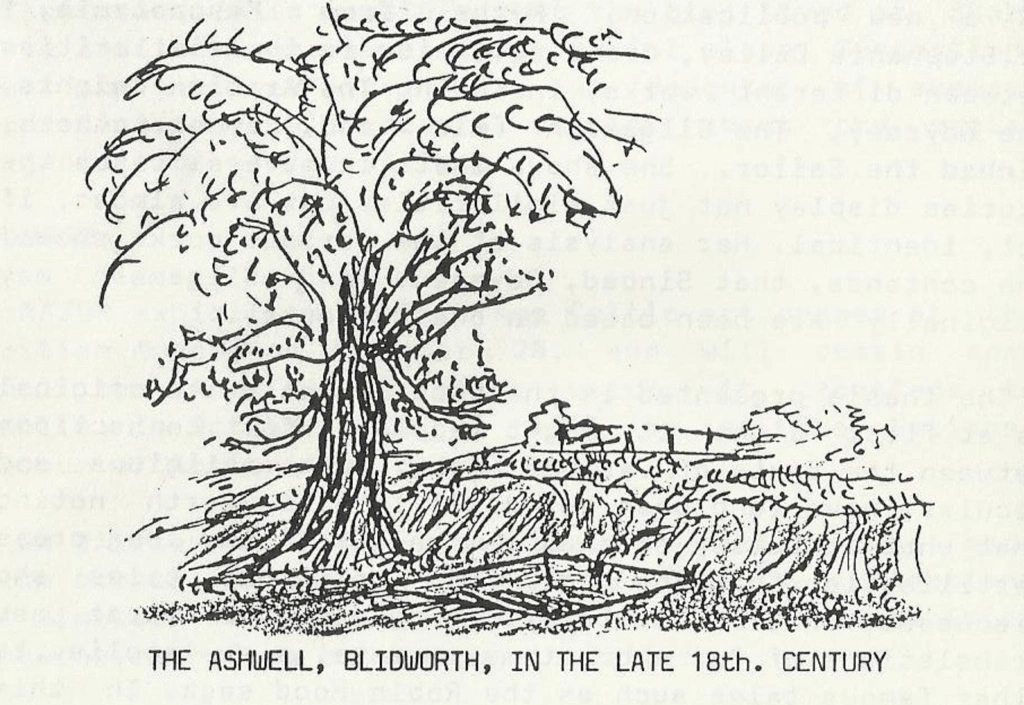by Robert Morrell
Almost opposite the parish church of St.Mary of the Purification at Blidworth, was the site of the Ashwell, a spring not mentioned in my Nottinghamshire Holy Wells and Springs (APRA Press, 1988). This was covered up and a wall built in front of it some time after the 1914-18 war, but before then it had been used for centuries not just as source of water for the village but also for its healing properties, the water being considered to be particularly efficacious in curing rheumatism relieving the pain caused by it. The spring’s name is now preserved in that of a nearby cottage.
The name Ashwell was derived from a huge ash tree that grew adjacent to the spring; in 1800 this accidentally cut down, a deed which caused consternation in the village, as the tree thought to bring good luck. There is was itself an ancient tradition about ash trees themselves having curative powers. It was an old practice to cleft asunder ash trees when they were young and flexible, the cleft being held apart by wedges. Children with ruptures were stripped naked and pushed through the apertures, after which the trees were plastered with clay or mud in order to enable the clefts to grow together. On this the success of the cure was thought to depend. Ancient ash trees showing cicatrices down their sides are evidence of them having been used for this practice. The people who had cut down the tree are said to have suffered from extreme bad luck and illness, which the spring water failed to relieve.
At Fountain Dale, near Blidworth, adjacent to where a monastic structure once stood, is Friar Tuck’s Well, a chalybeate spring, the water of which was also said to have medicinal properties. According to a letter from the Rev. R.H. Whitworth, Vicar of the village from 1865 until 1908, to the late Ernest Smedley, a local historian and student of folklore, who lived in Hucknall, the spring was still visited by people anxious to use its healing water. He also added, that at one time in the remote past it had been called St. Lawrence’s Spring, though other than this reference I have not met with that name being applied to it in any other Source book on the village. The well is now in a poor state of preservation, mainly due to a tree having fallen on its surrounding fence and demolishing it. According to local tradition the spring, which periodically dries up for long periods, does so because of a curse laid on it by Friar Tuck. Blidworth has close connections with the Robin Hood saga, the village having been the traditional home of Maid Marion, and the supposed grave of Will Scarlet can be seen in the churchyard.
The lakes at Fountain Dale house are fed from Rainhill Water, one of the streams running into which is called the Foulevil Brook, which by tradition received its name because the Romans are said to have bathed in it to cure a skin disease called the foul evil.
Article originally published in Hidden History Magazine, 1990.


